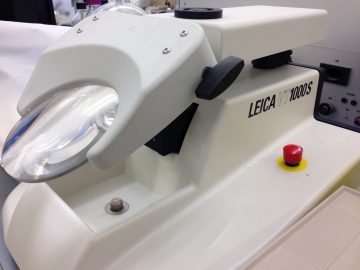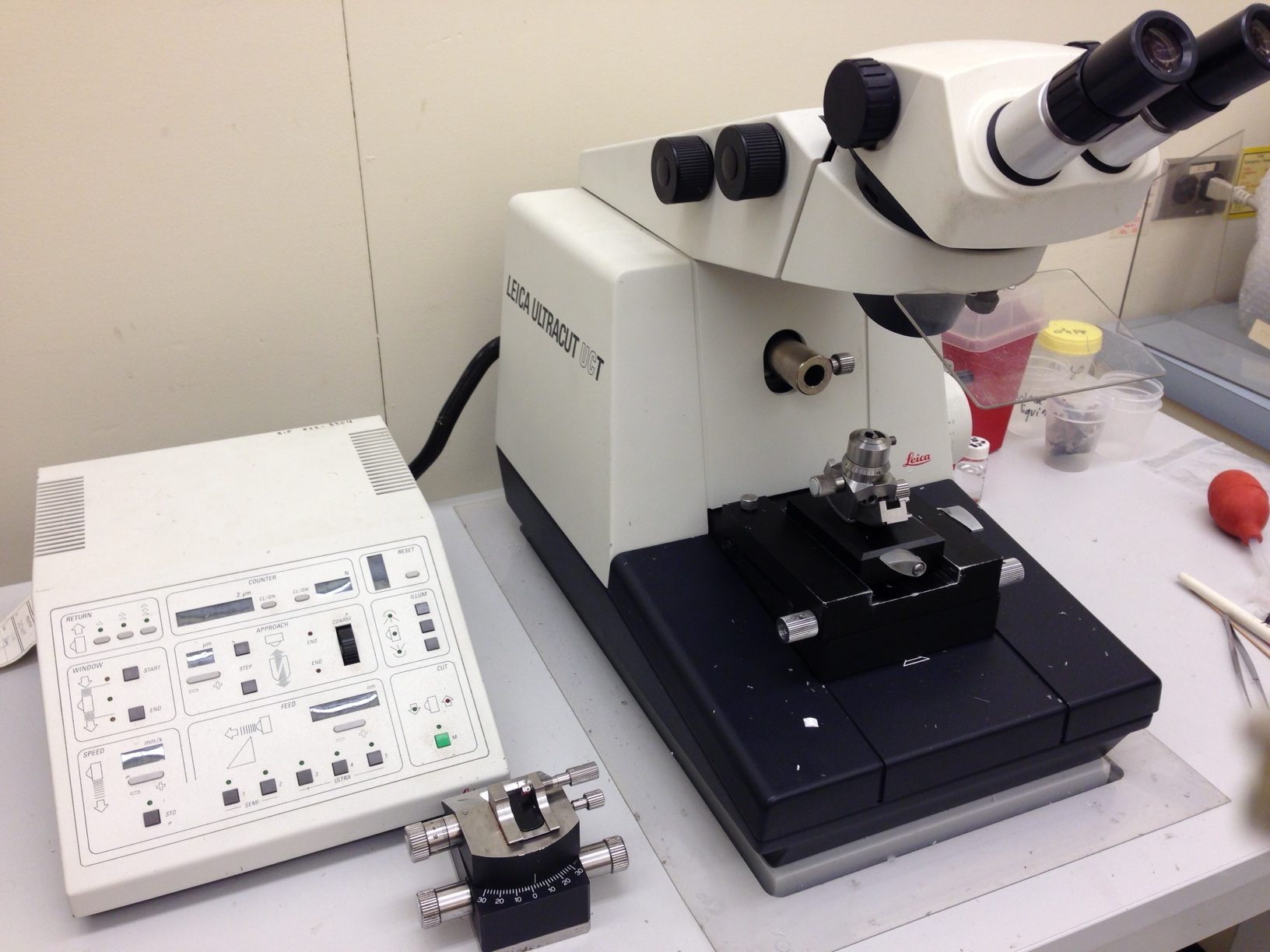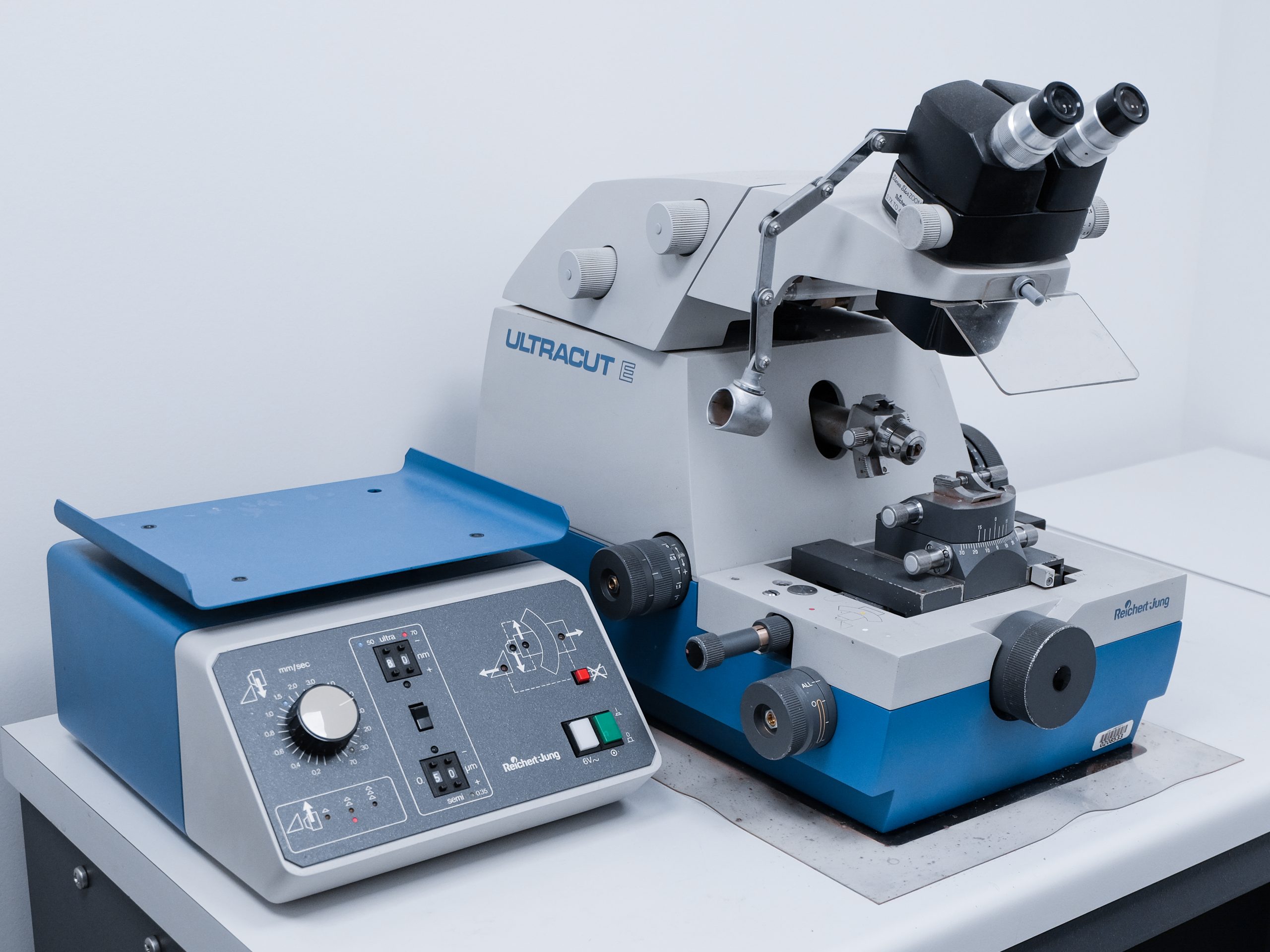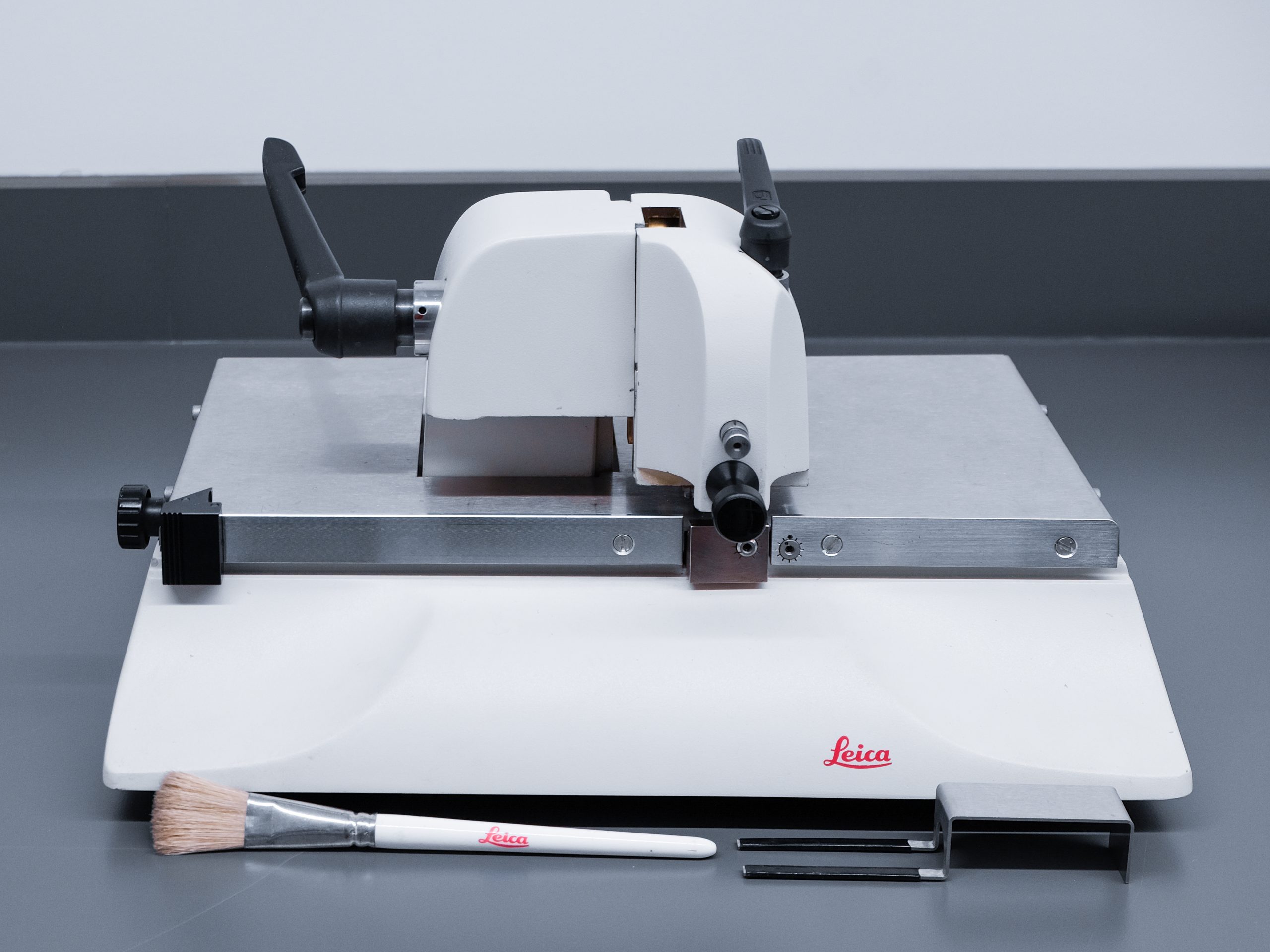The BIF has equipment to cut thick samples using a vibratome or ultra-thin sections with ultramicrotomes. Ultramicrotomy is a method for slicing specimens into extremely thin slices, called ultra-thin sections (usually >100nm thick), that can be studied and documented in a transmission electron microscope (TEM). It is commonly used for biological specimens, but sections of plastics and soft metals can also be prepared.
| Leica VT1000S Vibratome Capabilities: - Vibrating blade microtome - Produces thick sections (> 5 um) of fixed or fresh tissue without freezing or embedding in resin for light microscopy Cost: Academic users: $13.20/hr Specifications: The frequency can be adjusted from 0 – 100 Hz The amplitude can be adjusted from 0.2 – 1 mm in 5 mm increments Knife advance speed is adjustable from 0.025 to 2.5 mm/sec The section window and specimen retraction mechanisms are programmable Samples are usually embedded in agar or gelatin for support |  |
|
| Ultramicrotomes Three ultramicrotomes are available in the BIF for cutting semi-thin and ultra-thin sections (<100nm) of resin embedded material for light microscopy and TEM. Cost: Microtome: Academic users: $26.40/h Cryo-ultramicrotomy: Academic users: $275/day |
||
| Leica UC7 with FC7 cryo-chamber - Ultramicrotome - Cryo-ultramicrotome for cutting frozen samples for the Tokuyasu technique for immunolabelling, and for high-pressure frozen samples for cryo-electron microscopy for vitreous sections. FC7 cryo-chamber maintains the temperatures as low as -160C. |  |
|
| Leica Ultracut T with FCS cryo-chamber -Ultramicrotome -Cryo-ultramicrotome |  |
|
| Reichert Ultracut E -Ultramicrotome |  |
|
| Leica EM KMR2 Glass Knife breaker The Leica EM KMR2 glass knifemaker produces 45 glass knives from 6.4, 8 and 10 mm thick glass utilizing the balanced-break method. Cost: Glass knifemaker including 1 strip of glass:Academic users: $20/each |  |
|